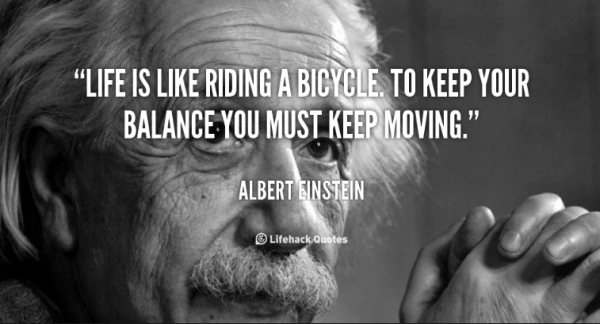Bicycling Etiquette 101
 It can be argued that the best part of bicycling is the freedom. When you hit the road, you leave your woes behind. Speeding along with the wind in your hair, it’s easy to forget about the stress and demands of your everyday life. If you’re a mostly solo rider, however, it’s also easy to forget that you’re not the only one out there. This can have serious consequences for you as well as others. By following a few simple guidelines, you can ensure that riding remains not just a fun activity, but a safe one.
It can be argued that the best part of bicycling is the freedom. When you hit the road, you leave your woes behind. Speeding along with the wind in your hair, it’s easy to forget about the stress and demands of your everyday life. If you’re a mostly solo rider, however, it’s also easy to forget that you’re not the only one out there. This can have serious consequences for you as well as others. By following a few simple guidelines, you can ensure that riding remains not just a fun activity, but a safe one.
1. Be predictable
If others know what you’re doing, they can do what they need to do to avoid you. This goes not just for other bicyclists, but for motorists as well. When you’re out on your bike, you have to be predictable. The last thing you want to do is surprise a motorist.
Being predictable means doing what’s expected. Ride your bike with traffic, for instance, as this is where drivers expect to find you. Announce your intentions as much as you can, whether physically or verbally. Signal when making a turn, and when you intend to pass another rider, always do your best to notify them.
2. Be alert
It’s tempting to pop in your headphones while you ride, or to chat it up with a riding partner. Both of these things, however, take your attention away from your surroundings, which can lead to a serious accident.
Always keep a lookout for potential dangers when you ride. Look for traffic lights and cars back. Watch out for road hazards. By keeping your attention on your ride, you not only get the most out of your workout, you also steer clear of any unexpected mishaps.
3. Stay on the right
As a cyclist, you should mostly ride on the right side of the road. There are ongoing conversations on this topic on many forums and some cyclists prefer “owning” the road and keeping traffic behind them but you should only do this in those rare occasions that you are avoiding dangerous situations by doing so. If you do spot a hazard on the road (a big pothole or lots of loose gravel) make sure to establish your position on the road when it is safe and make sure to do it early, there is nothing worse than trying to avoid something in the last few seconds and riding out in to traffic. Once you pass the hazard move back on to the shoulder of the road and give the traffic behind you a nice smile and a wave.
Under no circumstances should you ever cross into oncoming traffic! Better to wait for a passing opportunity than to risk a head-on collision with a motorist.
4. Never pass on the right
Always pass a slower rider on the left-hand side. This is common etiquette, but it’s also a standard safety practice. In keeping with the first rule, always announce your approach (“Approaching rider!”) and your intention (“Passing on the left!”) when you pass someone, or something to that affect. I never used to do this, but after scaring the $#!% out of several riders I now consider it common cycling etiquette.
5. Don’t draft a stranger
Drafting is a term used to describe riding close behind another rider in order to conserve energy. The rider in front is doing most of the work to overcome the force of drag, while the rider in back is taking advantage of the slipstream.
Most bicyclists won’t mind if you draft them, but some riders are vehemently opposed to a complete stranger riding so close. For one thing, they have no idea about your level of experience, and you might be endangering them by being so close to them.
To avoid any problems or confrontations, it’s easiest to just avoid drafting. If you must draft, announce your intentions and then offer to reciprocate by taking the front position later in the ride.
6. Adjust your mindset on multi-use paths
Multi-use paths are not the place to do your speed work. They are marked paths that are meant to be shared by everyone, from families out for a stroll, to joggers, to roller skaters. Adjust your speed to avoid collisions and to avoid startling anyone. Be on the lookout for small children, who might inadvertently dart into your path. The rule on multi-use paths is courtesy, so don’t go whipping by expecting others to get out of your way.
7. Have fun
Cycling is supposed to be a rewarding experience. If you find yourself getting aggravated or stressed out, then you need to do something differently. Whether that means taking a different approach to the way you handle confrontations or finding a more isolated place to ride is up to you. The bottom line is that getting on your bike should be a way to leave your troubles behind. It should get your heart going, yes, but only in a good way.